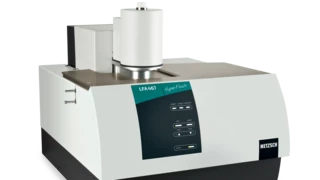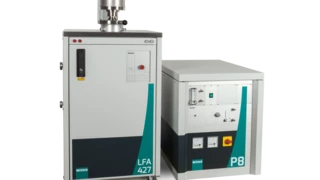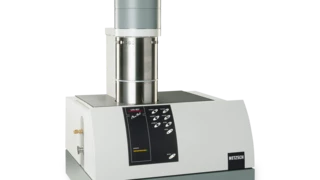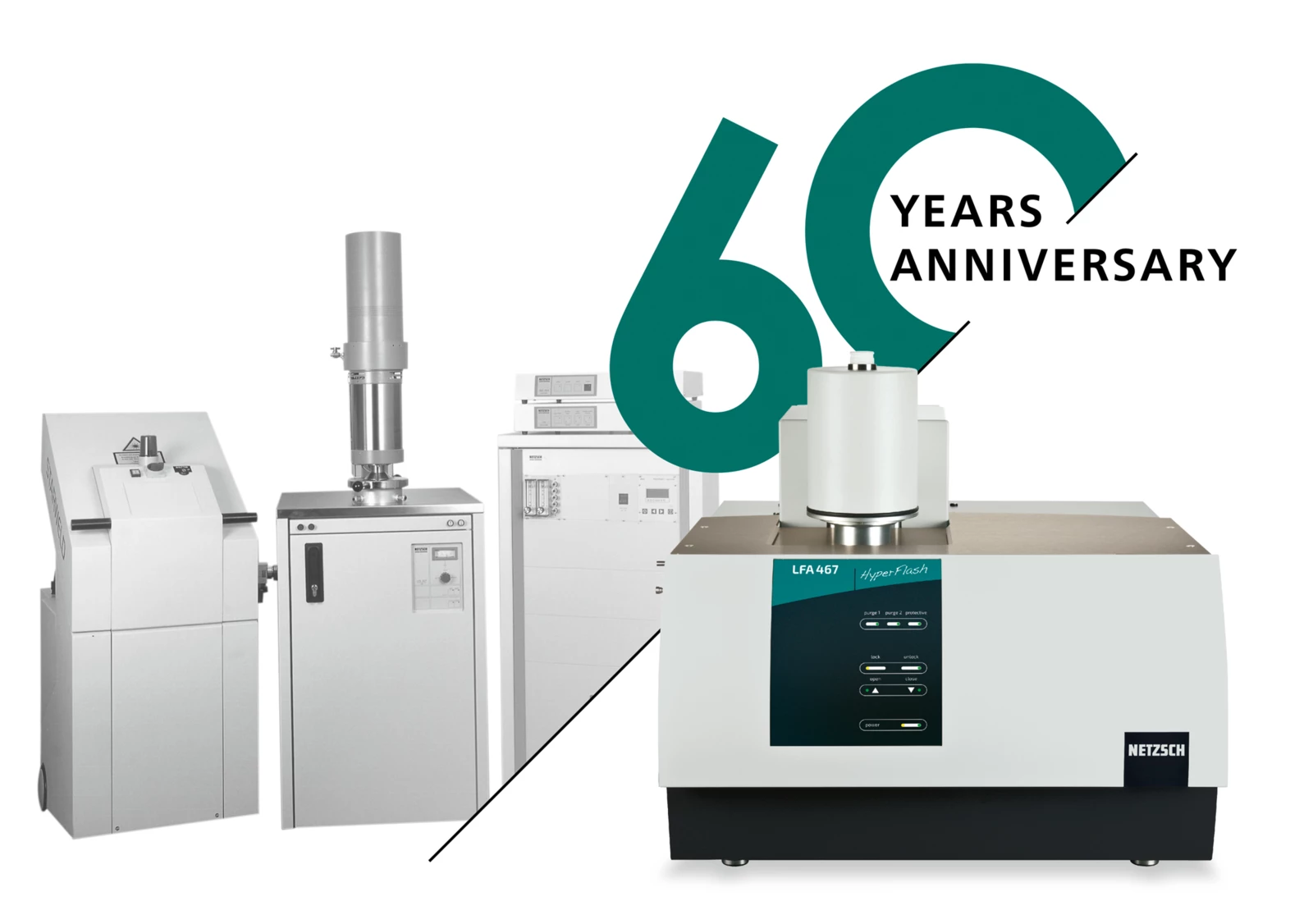
15.09.2022 by Aileen Sammler
60 Years of NETZSCH-Gerätebau: The Development of New Laser Flash Apparatuses
Last week you learned about the history of NETZSCH Laser/Light Flash Analyzers, known as LFAs for short. Today we will talk about further Laser Flash developments and unveil what our Managing Director Dr. Jürgen Blumm researched in his dissertation in connection with the LFA.
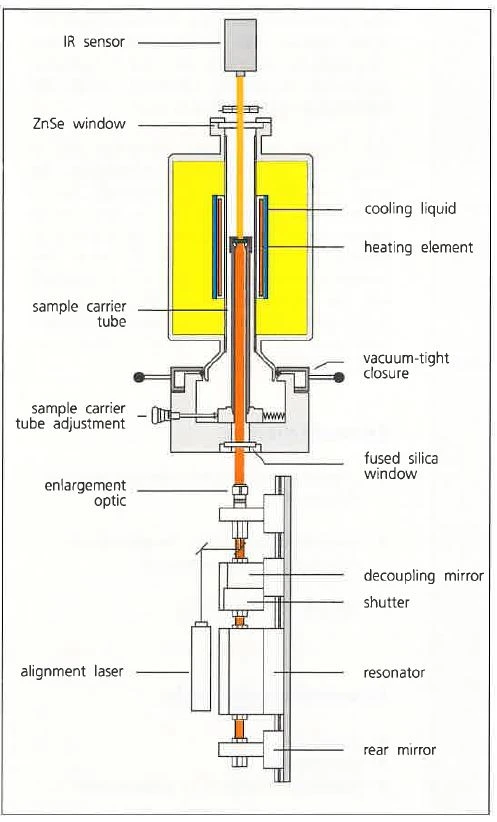
The new low-temperature laser flash apparatus
How do the energy requirements for heating/cooling a home change as a result of various outdoor temperatures, or how does the temperature distribution in a satellite look under the conditions in outer space? In order to answer questions like these, a measurement instrument was needed that was also capable of operating below room temperature.
NETZSCH therefore developed, in the year 1997, an LFA 427 for the low-temperature range that could measure the Thermal DiffusivityThermal diffusivity (a with the unit mm2/s) is a material-specific property for characterizing unsteady heat conduction. This value describes how quickly a material reacts to a change in temperature.thermal diffusivity of materials between -40°C and 200°C. It was used in fields such as construction materials, plastics, and materials for air and space travel. The special features of this LFA were its tube furnace with bifilar heating coil and cooling jacket, as well as a circular cooling system for temperatures below room temperature.
Laser Flash Analysis as a component of the dissertation of our Managing Director Dr. Jürgen Blumm
In 1995, Jürgen Blumm began his career in the Applications Laboratory. Through a research project for SinteringSintering is a production process for forming a mechanically strong body out of a ceramic or metallic powder. sintering optimization in collaboration with the Julius-Maximilian University of Würzburg, he dedicated his dissertation in 2003 to the topic “Thermal Characterization of High-Performance Ceramics before, during and after the SinteringSintering is a production process for forming a mechanically strong body out of a ceramic or metallic powder. Sintering Process”. The measuring methods that were expanded upon and combined within the scope of his doctoral thesis brought an entirely new approach to the analysis of the SinteringSintering is a production process for forming a mechanically strong body out of a ceramic or metallic powder. sintering process. The kinetic simulation calculations were a game-changing contributor toward process optimization for the SinteringSintering is a production process for forming a mechanically strong body out of a ceramic or metallic powder. sintering of ceramic materials. Jürgen Blumm was one of the first to research multiple-step SinteringSintering is a production process for forming a mechanically strong body out of a ceramic or metallic powder. sintering kinetics. He used the Laser Flash procedure for investigating the temperature diffusivity:
See here an excerpt from the dissertation of Jürgen Blumm:

„Through measurement of the Thermal DiffusivityThermal diffusivity (a with the unit mm2/s) is a material-specific property for characterizing unsteady heat conduction. This value describes how quickly a material reacts to a change in temperature.thermal diffusivity in accordance with the laser flash procedure, it was possible to determine influences of phase changes on the transport properties. This no-contact, non-destructive measurement procedure made measurements possible even in the SinteringSintering is a production process for forming a mechanically strong body out of a ceramic or metallic powder. sintering area. The use of current evaluation procedures known from literature as well as ones newly developed within the scope of this work allowed for results with a considerable increase in precision. The combination of all the measurements allowed for the determination of the Thermal ConductivityThermal conductivity (λ with the unit W/(m•K)) describes the transport of energy – in the form of heat – through a body of mass as the result of a temperature gradient (see fig. 1). According to the second law of thermodynamics, heat always flows in the direction of the lower temperature.thermal conductivity of the ceramic materials before, during and after the SinteringSintering is a production process for forming a mechanically strong body out of a ceramic or metallic powder. sintering process with the precision needed for simulation calculations.
On the basis of the measured thermophysical data, finite-element simulations were carried out, which allow for insight into the temperature distribution within a ceramic SinteringSintering is a production process for forming a mechanically strong body out of a ceramic or metallic powder. sintering body during heat treatment. Above all, by taking into consideration the temperature-dependent dimensional changes and the Thermal DiffusivityThermal diffusivity (a with the unit mm2/s) is a material-specific property for characterizing unsteady heat conduction. This value describes how quickly a material reacts to a change in temperature.thermal diffusivity, simulations with high precision were guaranteed at high temperatures. Through the improvement of existing evaluation routines and the use of state-of-the-art evaluation procedures, it was possible to achieve a higher level of precision with measurement data and a better understanding of the processes during SinteringSintering is a production process for forming a mechanically strong body out of a ceramic or metallic powder. sintering.
The measurement procedures expanded upon and/or combined within the scope of this work allow for a new approach to analysis of the SinteringSintering is a production process for forming a mechanically strong body out of a ceramic or metallic powder. sintering process. The simulation calculations made possible on the basis of the measurement results allow for the optimization of process control during the SinteringSintering is a production process for forming a mechanically strong body out of a ceramic or metallic powder. sintering of ceramic materials. In addition, through the near-complete thermal characterization of a ceramic during the manufacturing process, it becomes possible to adjust the thermophysical properties of a component to its subsequent application.“
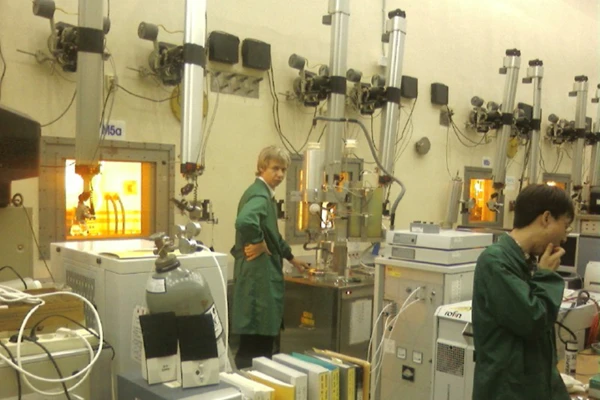
NanoFlash and MicroFlash®® appear
In order to be able to cover an even broader user market, NETZSCH expanded its product line at the beginning of the 2000s and acquired the American company Holometrix-Micromet, which had been producing both a Heat Flow Meter series and a small LFA. Already in 2002, the first NETZSCH LFA table-top instrument was launched: the LFA 447 NanoFlash. It was utilized especially in basic research and quality control. With the LFA 457 MicroFlash®®, another LFA table-top apparatus with comprehensive technical and design-specific innovations was introduced onto the market. The LFA 457 MicroFlash®® featured both newly designed electronics and various furnaces which allowed for measurements in the temperature range from -125°C to 1100°C. All LFA systems were conform to ASTM E1461.
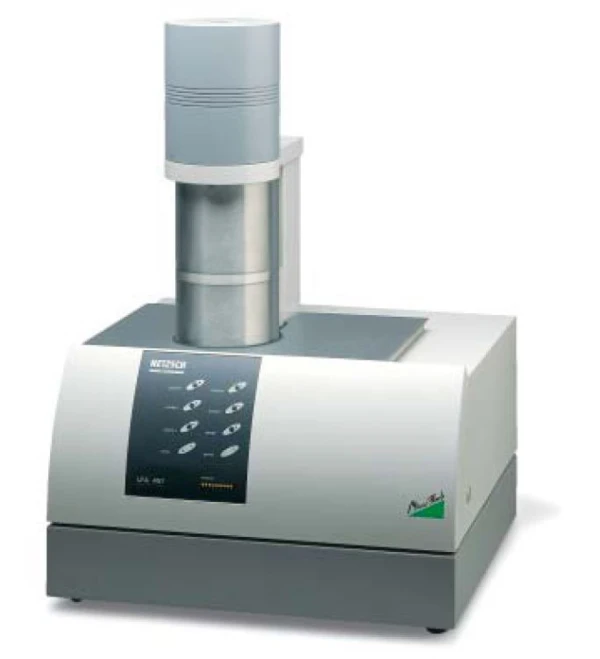

Click here to read the technical paper from those times by Dr. Jürgen Blumm and Stephan Knappe regarding the LFA 447 NanoFlash, titled “From Light Flash to Heat Transfer of Polymers”:
First LFA with Xenon Light Source up to 1250°C
In 2013, with the LFA 467 HyperFlash®®, a new design for a Laser/Light Flash Apparatus was successfully launched. This light flash system laid the foundation for the new high-temperature apparatus LFA 467 HT HyperFlash®, with which it was finally possible to conduct measurements with a Xenon flash lamp up to 1250°C. The space requirement for the high-temperature version remained the same as for the low-temperature version. Furthermore, the light source sets itself apart through a long lifetime and additionally does not require classification into a laser class.
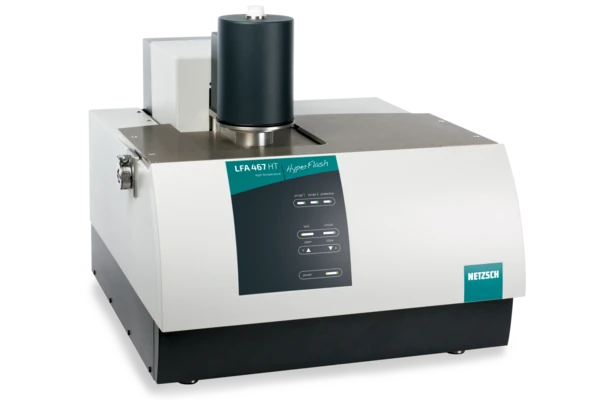
Click here to read an article in our OnSet customer magazine from 2015 introducing the new-at-the-time LFA 467 HT HyperFlash®:
Market leader in the determination of thermal conductivity and thermal diffusivity
NETZSCH-Gerätebau GmbH today offers three models of LFA, covering a broad spectrum of materials across a wide temperature range. The NETZSCH LFA systems fulfill relevant instrument and application standards such as ASTM E1461 and DIN EN 821.
